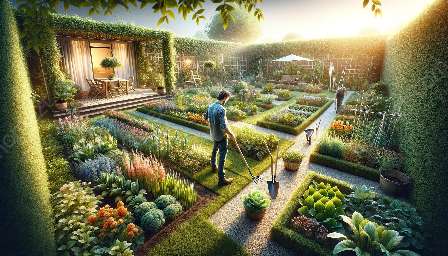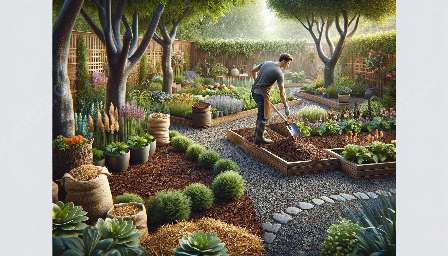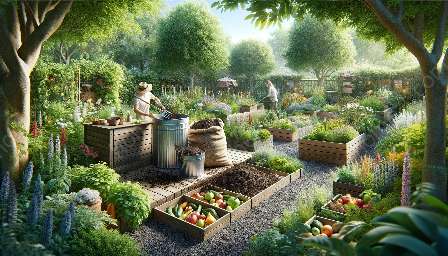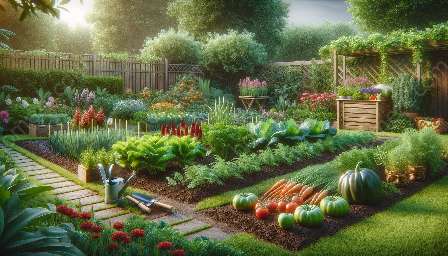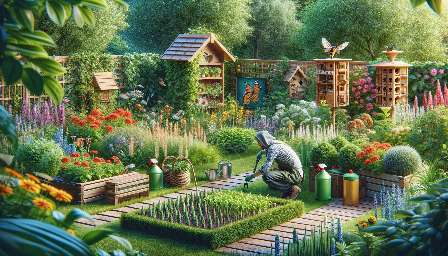In the world of gardening and landscaping, weeding is an essential practice that contributes to the health and aesthetics of a garden. Weeds compete with plants for water, light, and nutrients, making it crucial to employ effective weeding techniques to ensure the overall well-being of your garden. This comprehensive guide will delve into various weeding techniques, offering valuable insights on how to manage this aspect of gardening and landscaping.
The Importance of Weeding
Weeds not only detract from the visual appeal of a garden but also pose a significant threat to the overall health of plants. Left unattended, weeds can quickly overtake a garden, choking out desirable plants and hindering their growth. Additionally, some weeds have the potential to harbor pests and diseases, further jeopardizing the well-being of the garden. Implementing proper weeding techniques is crucial for maintaining a healthy and thriving garden.
Weeding Techniques
1. Hand Weeding: This traditional and effective method involves manually removing weeds by hand or using hand tools such as trowels and weed pullers. It is particularly useful for removing weeds from small, delicate areas or for targeting individual weeds in flower beds and vegetable gardens.
2. Mulching: Applying a layer of mulch around plants and in garden beds helps to suppress weed growth by blocking sunlight and creating an unfavorable environment for weed establishment. Organic mulches also contribute to soil health as they break down over time.
3. Pre-Emergent Herbicides: These herbicides are applied to the soil to prevent weed seeds from germinating. They are effective for controlling annual weeds and can be especially useful in areas prone to weed infestations.
4. Post-Emergent Herbicides: When weeds have already emerged, post-emergent herbicides can be used to target and eliminate them. It is important to select the appropriate herbicide for the types of weeds present and to follow application instructions carefully.
5. Regular Maintenance: Consistent monitoring and removal of emerging weeds can prevent them from proliferating and becoming a larger problem. Regular weeding, especially during the growing season, is crucial for keeping weed populations in check.
Integration with Gardening Basics
Integrating weeding techniques with gardening basics is essential for the overall success of any garden. Proper soil preparation, watering, and fertilization are fundamental gardening practices that complement effective weeding. For example, maintaining healthy soil with good drainage and proper nutrient levels can foster strong, resilient plants that are better positioned to outcompete weeds.
Additionally, understanding the growth habits and life cycles of common weeds can aid in implementing proactive measures to prevent weed establishment. By aligning weeding techniques with gardening basics, gardeners can create an environment that promotes the growth of desired plants while minimizing the impact of weeds.
Weeding in Landscaping
In landscaping, weeding is crucial for preserving the visual appeal of outdoor spaces. Incorporating weeding techniques as part of a comprehensive landscaping plan helps uphold the integrity of designed landscapes, from manicured lawns to ornamental plantings. By utilizing targeted weeding methods and integrating them seamlessly within the overall landscaping maintenance, the aesthetics and health of the outdoor space can be effectively preserved.
Conclusion
Weeding techniques are integral to gardening and landscaping, serving as a cornerstone for maintaining healthy and visually appealing outdoor spaces. By understanding the importance of weeding, implementing various weeding techniques, and integrating them with gardening basics and landscaping practices, gardeners and landscapers can cultivate thriving environments that showcase the beauty of well-tended plants and gardens.


